Features and rules for breeding forsythia by cuttings
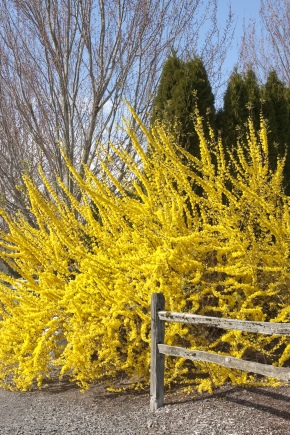
Forsythia is an early perennial shrub that blooms very profusely, attracting attention in early spring. Very often, professional gardeners and often amateurs practice forsythia propagation by cuttings. This method is one of the less troublesome and time consuming in comparison, for example, with seed propagation. Let's learn in detail how to properly prepare plant cuttings in autumn or spring, how to plant them in open and closed ground, and also get acquainted with the recommendations of specialists on this issue.
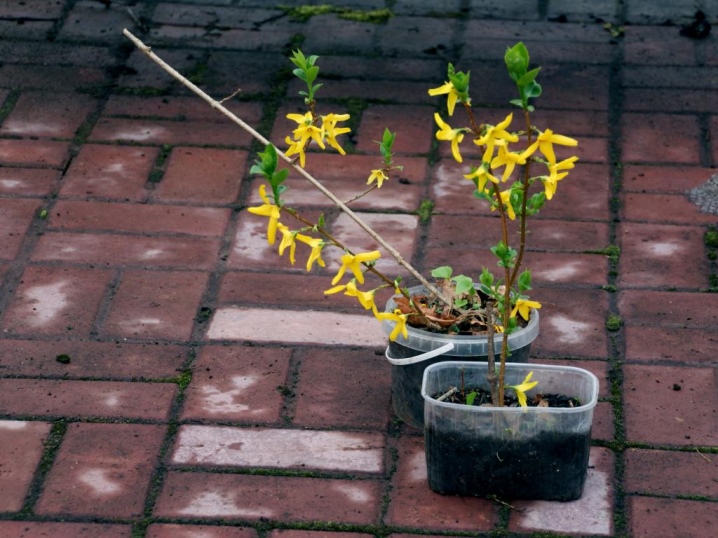
Description
Forsythia is an ornamental shrub that blooms in early spring. Before this plant has leaves, its branches are completely covered with bright yellow miniature flowers. This plant is especially important for planting in summer cottages and in suburban private estates, since it is very unpretentious. About 13 varieties of forsythia are known, which grow well in the middle zone of the country. The advantage of this plant is also the fact that it can be independently propagated in different ways.
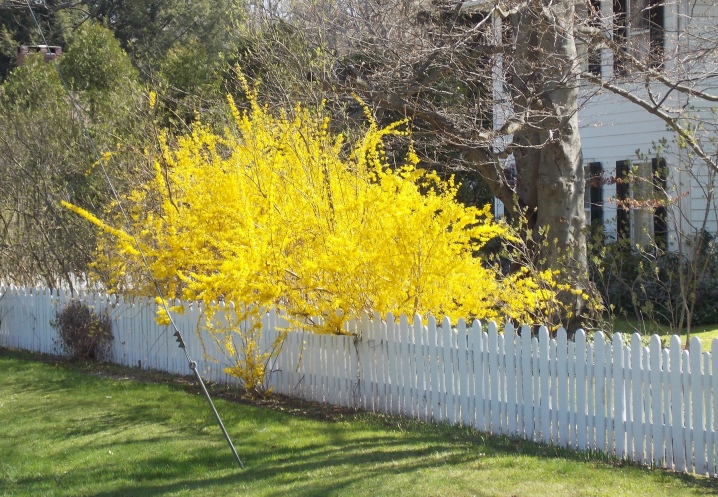
Breeding time
Forsythia is propagated the following types of cuttings:
- green (shoots on which at least 10 nodes are cut off at the end of spring);
- summer;
- autumn.
The end of autumn is considered the beginning of a dormant period for many plants. For forsythia, this is the ideal time to cut the cuttings. Annual branches of the bush should be free of visible damage, creases and bends. It is best to have time to cut the cuttings before the onset of cold weather, although some gardeners claim that they can be cut even in frost.
Reproduction by cuttings is also possible in spring, late May and early summer.
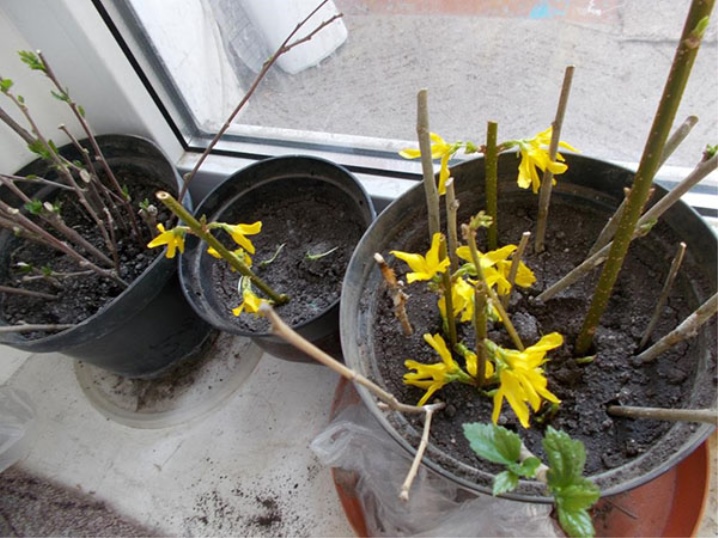
Preparing cuttings
To propagate a plant by cuttings in the fall, it is very important to cut the cuttings themselves correctly.
- Shoots should be strong, lignified, preferably this year. The recommended length is about 15 cm, you can 20.
- The top cut should be straight and the bottom cut at an angle. This is done to further increase the area of formation of young roots.
- The distance from the edge to the first knot should be one to two cm on both sides.
Cuttings cut in the fall are sent to a cold place until early spring. This can be either a cellar or a refrigerator. Many cuttings can be conveniently bundled into a bundle for storage.
Some gardeners drop cuttings into the snow, but for beginners it is better not to experiment.
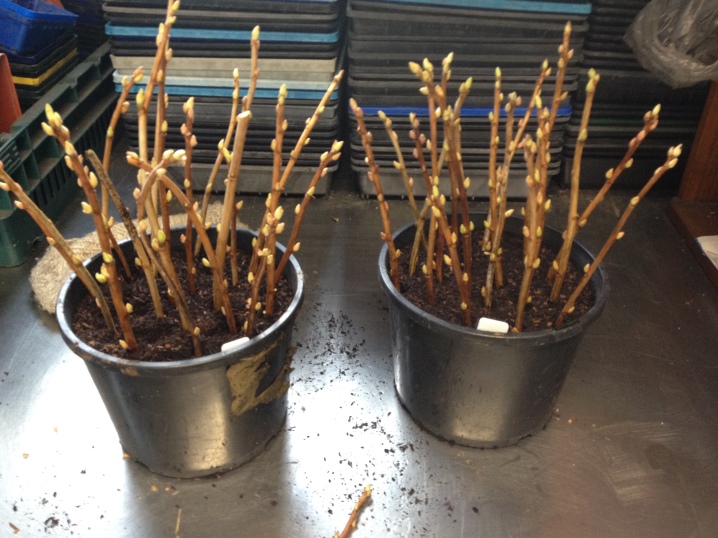
Reproduction by green cuttings in spring is possible if the plant is young; for this, shoots that are no more than one year old are used. They are usually harvested immediately after flowering forsythia. The ideal time is late May and early June. If in the future the soil is wet, then the green cuttings will take root without problems, for grafting it is best to choose shoots that are just beginning to lignify, their optimal length should be 15 cm.
Leaves from cut branches do not need to be removed in spring. If they get in the way, then only a few lower ones can be removed. Only by the leaves in the future it will be possible to find out whether a young seedling has taken root or not. If they wither, then this means that the plant has not started up young roots.
Green cuttings, cut in spring or summer, can be soaked in a special growth stimulant - it will speed up the process of root formation.As a result, the young plant will grow in the flowerbed in the fall.
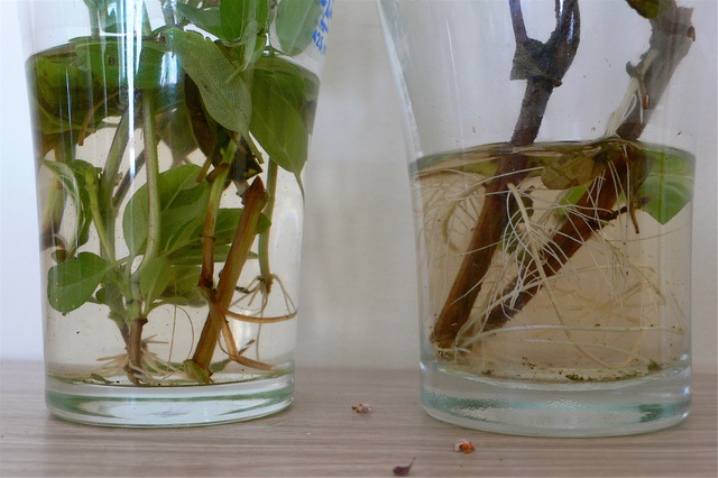
How to plant?
Forsythia cuttings can be planted indoors and outdoors. Usually, they land in a closed one immediately, in which they take root faster. In any case, for better rooting, it is recommended to place the cuttings in a special solution, for example, in "Kornevin", before planting. It is necessary to leave it in the solution for an average of 4–5 hours, but it can be longer.
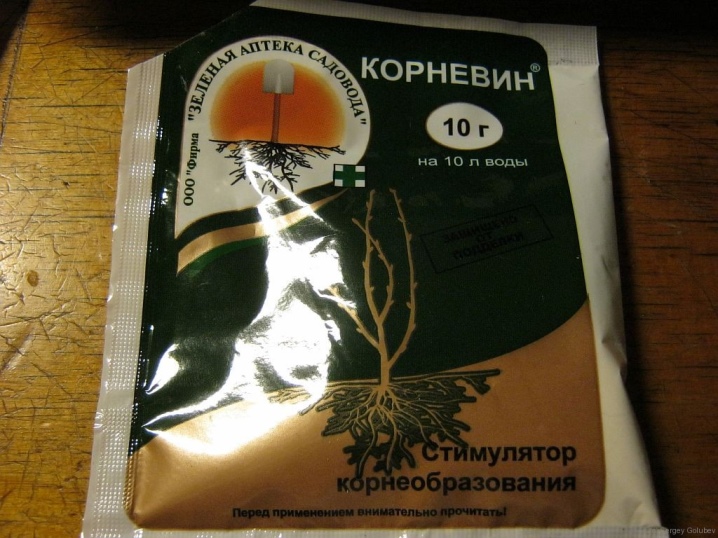
Indoor
For planting green cuttings of forsythia in closed ground, you should prepare loose soil that allows air to pass through well. Cuttings should be planted at a distance of 5–8 cm from each other and to a depth of no more than 5 cm. It is best to plant in a transparent container, since the developing roots will be best seen in it. It is recommended to cover the cuttings with a glass jar or a large plastic glass, you can use a bottle to create a kind of greenhouse in which the rooting of plants will take place the fastest.
The cuttings should be regularly ventilated and watered, while using a small watering can, if after a month the roots are visible on the shoots, then the plants can be safely transplanted to their future permanent residence.
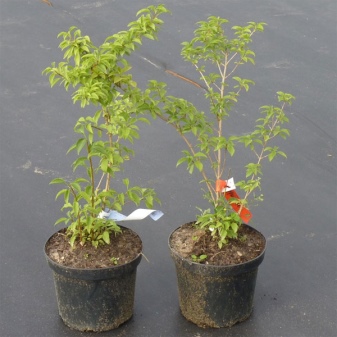
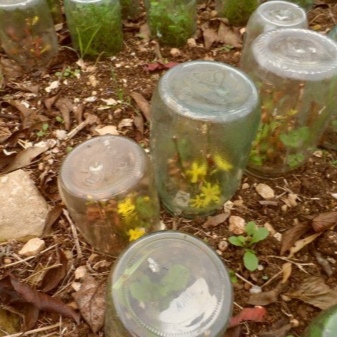
In open ground
Lignified cuttings that have been stored in a cold place all winter should be properly planted in the ground. This is done in the spring. It is best to choose warm weather and decide on a place in advance. Before planting, the cuttings are updated. Further, a small hole should be dug and poured with water, after the water is completely absorbed, a young plant should be placed in it to a depth of no more than 10 cm... It is necessary to leave 2-3 buds on the surface. Tamp. If several cuttings are planted at once, the distance between them should be about 5-8 cm.
With the arrival of the first frosts, young plants should be covered, since in a short time they will not have time to grow and get stronger.
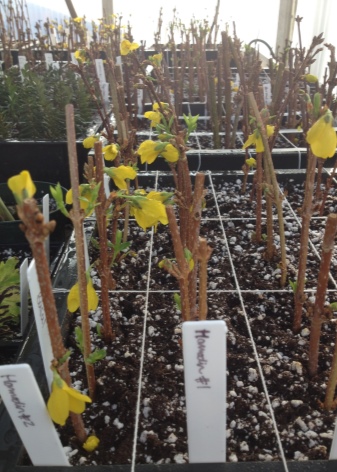
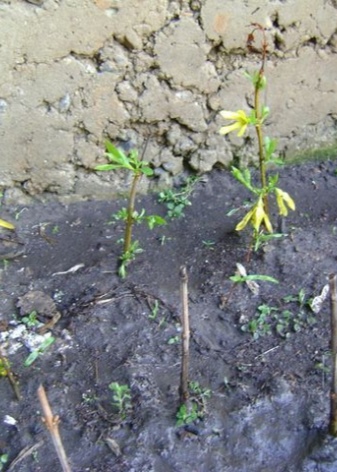
Reproduction of forsythia in water in the spring is extremely rare. Most of these plants do not take root, and therefore very few people undertake experiments. Nevertheless, this is done quite simply.
- Green cut branches are placed in small cups of water, where a plant growth stimulator is added in advance.
- After the appearance of the first roots, the plants are transferred either to the open or to the closed ground. But "growing" should still be carried out, creating a greenhouse conditions, that is, cover the plants with a jar or bottle.
- In autumn, mature plants can be safely transferred to a permanent place of residence, giving preference to less sunny areas of the garden.
It is worth noting that the technique of planting spring and summer cuttings in indoor and outdoor ground is no different. But in all cases, it is advisable to cover young plants with a jar, constantly water and air them, and it is also recommended to shade the area when it comes to open ground.
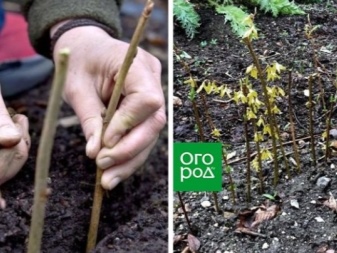
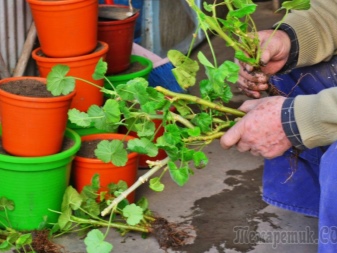
Recommendations
Professional gardeners recommend taking your time and not replanting rooted cuttings of forsythia from the pot directly into the ground, it is better to do this in the spring of next year, when the plants are fully stronger and grow their root system.
If the cuttings were harvested last year, then it is recommended for them to dilute a weak solution of potassium permanganate, in which they should be soaked. This will make it easier to root the plants in the future. After soaking, the slices should be refreshed.
It is best not to cut too thick cuttings from forsythia, otherwise the whole process will be delayed in the future.
When the first frost appears, young forsythia plants in the open field should be covered by at least 20 cm, using dry foliage or straw for this.
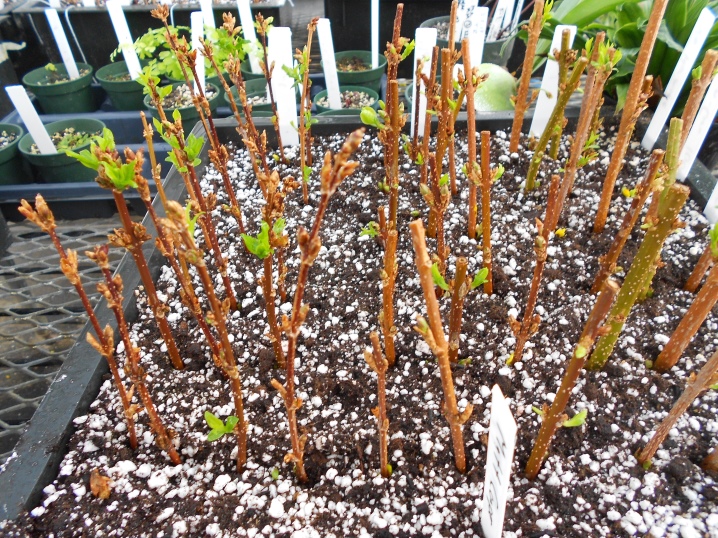
It is very important not to cut the bush too often, this should be done at least after a year has passed, since the flowers of forsythia bloom on the shoots of the last year, but if everything is cut off, then the flowering will be very scarce.
If you cut the bush correctly, as well as perform all the steps for rooting the plant sequentially, then after a year, the young plant will be able to please with its flowering. Breeding forsythia can be a lot of fun for novice gardeners, as cuttings are very fun.
How to propagate forsythia by cuttings, see the next video.






























































The comment was sent successfully.